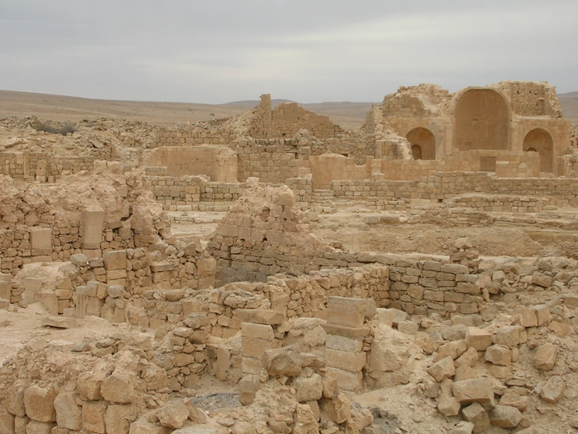By Bilha Moor*
Moor, Bilha. “Mosque and Church: Arabic Inscriptions at Shivta in the Early Islamic Period.” JSAI 40 (2013), pp. 73-141.
This study examines a missing puzzle piece in the history of Shivta (Sobata) and its monuments, as it sheds light on the transitional period between Byzantine and Islamic rule in southern Palestine. For the first time, it presents and analyzes the undated Arabic inscriptions found at the mosque and the North Church of the town in the excavations of 1933-34. Comprehensive paleographic analysis dates the inscriptions to the Umayyad or early ‘Abbasid period, ca. 700-760 CE. The study also shows that some of the inscriptions comprise a uniquely large and early corpus of Qur’anic verses, second only to the Umayyad Dome of the Rock in Jerusalem (72 AH/691-2 CE).
Altogether there are seven Arabic inscriptions written in angular script,none of which is dated. Six of them had been incised on limestone, and found at the mosque. Another very large painted inscription on plaster was divided and removed from a wall in the North Church by the excavators, and has been kept in separate frames ever since. All the inscriptions are now kept at the Rockefeller Museum, Jerusalem.
Of special interest for IQSA members would be four inscriptions from the mosque, signed by three calligraphers. These are mainly comprised of Qur’anic verses. Altogether thirteen verses from six different Suras were chosen, both makkiyya and madaniyya. None of the inscriptions consists of a whole chapter; in fact, there are four verses maximum per inscription. One inscription combines four verses from four different Suras. Occasionally, the verse has not been cited in its entirety, though the inscription has been wholly preserved. One inscription demonstrates that the calligrapher, or the person who chose the verses, took some liberties and edited one of them by simply skipping or omitting a line, or a few words. Another inscription evinces a remarkable combination of two almost identical verses from two different Suras.
The verses address several fundamental issues in Islamic belief, namely: God as the creator, Muḥammad as the messenger of God, and the opposition to shirk, as if to declare the dogma of the new Muslim sovereigns. One verse, concerning the acceptance of other messengers in general, might have consciously addressed the Christian population of the town—who presumably continued their religious practices in the undamaged churches of Shivta—and tried to bring them closer to the new growing Islamic faith.
* Bilha Moor is a Rothschild postdoctoral fellow at the School of Oriental and African Studies (SOAS), Department of the History of Art and Archaeology.
© International Qur’anic Studies Association, 2014. All rights reserved.

